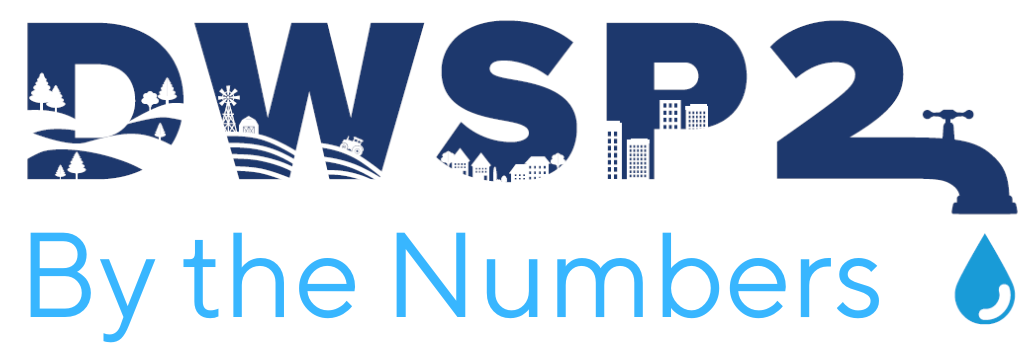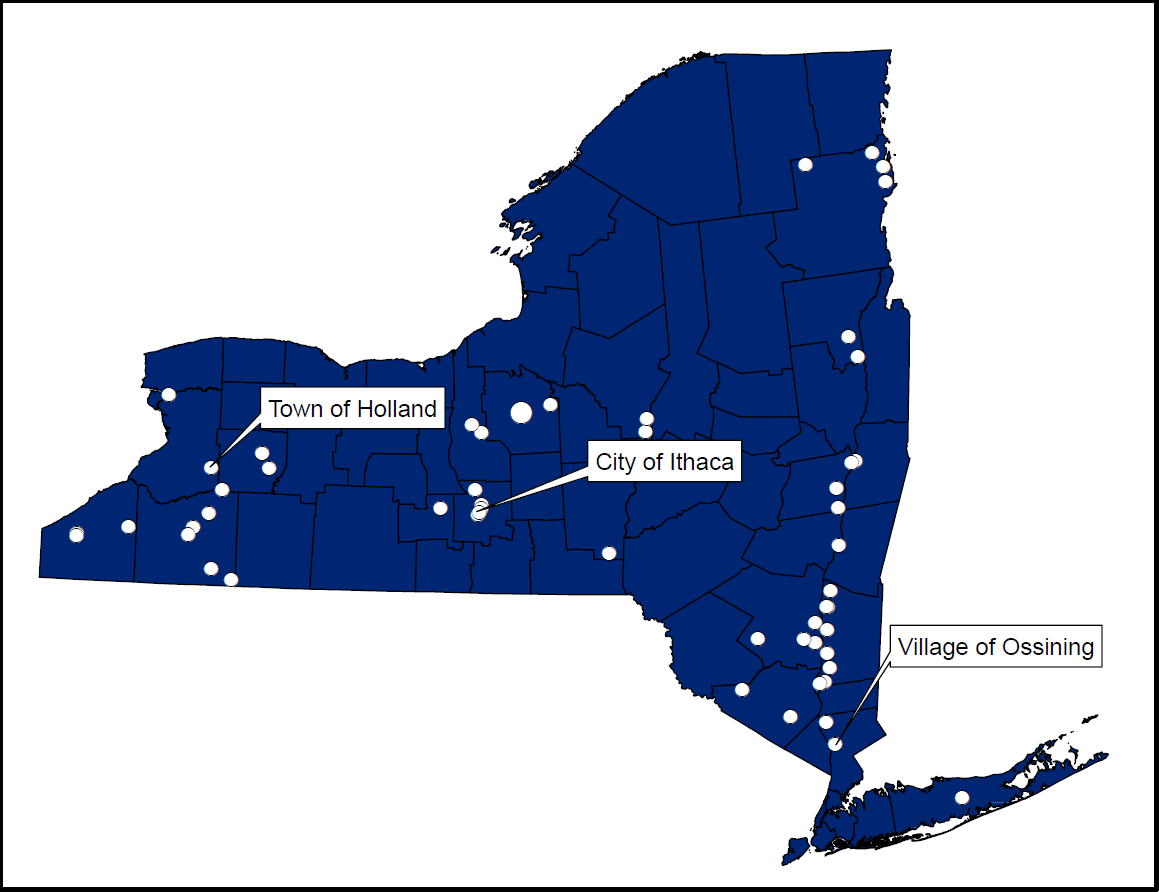Drinking Water Source Protection Program By The Numbers
The New York State Department of Environmental Conservation sent this bulletin on 01/18/2023 01:49 PM EST |
| DEC Delivers - Information to keep you connected and informed from the NYS Department of Environmental Conservation |
| Share or view as a web page || Update preferences or unsubscribe |
|
This past year the Drinking Water Source Protection Program (DWSP2) took big strides protecting drinking water resources across New York State. Over the past 12 months, 65 municipalities, totaling 49 plans, have worked towards creating action-oriented, community-driven DWSP2 plans to protect their drinking water sources. Ten of these communities have completed the plan development process and subsequently received State Acceptance, moving forward on implementing their plans. Before this year, many of these communities were relying on outdated assessments of potential contaminants near their water sources. Without assessing modern day vulnerabilities and engaging in preventative actions, many drinking water sources could be at risk of contamination. Communities who participate in DWSP2 receive free technical assistance to update their source water maps, assess potential contaminants in their watershed, identify effective actions to address those potential contaminant sources, and implement their source water protection actions. In doing so, communities have become more competitive for future funding opportunities and better prepared to stay on the forefront of public health. Our participating communities and technical assistance providers have a lot to be proud of in what they accomplished this past year. We look forward to helping new communities this year and seeing our current participants put their plans into action!
Why Participate in DWSP2We recently met with key stakeholders from the Town of Holland, the City of Ithaca, and the Village of Ossining to learn about their reasons for participating and what they are most proud of accomplishing during their DWSP2 plan development. Read below to learn about their experiences developing their community’s DWSP2 plan.
Town of HollandInterviewed: Marty Regan, Holland Planning Board, Chair and Jeanne Beiter, Senior Program Manager, Buffalo Niagara Waterkeeper Why Holland Chose to Participate in DWSP2Prior to participating in DWSP2, the Town of Holland had limited protections on their source of drinking water and many unknowns about the aquifer itself. DWSP2 helped provide the community with the necessary data and steps forward to increase protections on their wellhead area. Through the DWSP2 process the town has built relationships with local agencies and organizations such as, County Department of Health and Buffalo Niagara Waterkeeper, which will provide forward momentum on the plan. The DWSP2 process provided Holland the support and guidance necessary to develop a comprehensive source water protection plan. What Holland is Most Proud of Accomplishing During the DWSP2 Planning ProcessReceiving the Town’s approval to participate in DWSP2 was a significant achievement. The Town of Holland had concerns about the cost of the plan and its implementation. The planning efforts, like all DWSP2 plans, have been completed on a voluntary basis by the community’s stakeholder group with guidance and support from their state technical assistance provider, at no cost to the town. By participating in DWSP2, the town was able to build relationships and get access to resources needed to protect their source of drinking water. Presenting the completed plan to the Town Board helped educate the community and raise awareness about source water protection and its importance. The completed DWSP2 plan provided the town actionable next steps and funding opportunities to implement their source water protection actions. Priority Source Water Protection Actions Identified in Holland’s DWSP2 Plan
City of IthacaInterviewed: Roxy Johnston, Laboratory Director/Watershed Coordinator, City of Ithaca Water Treatment Plant and Darby Kiley, Associate Planner, Tompkins County Department of Planning and Sustainability Why Ithaca Chose to Participate in DWSP2 The DWSP2 process was a win-win for the City of Ithaca. Prior to DWSP2, the city wanted to develop a watershed protection plan for their source of drinking water, Six Mile Creek. DWSP2 provided the city free technical assistance to develop an actionable source water protection plan for their community's source of drinking water. What Ithaca is Most Proud of Accomplishing During the DWSP2 Planning Process Successfully getting their DWSP2 plan adopted by the City of Ithaca was a big achievement for the stakeholder group. Having the plan adopted at the local level allows the city to have an established and recognized plan that can be used to inform city planning and municipal projects while providing access to necessary grant funding. Priority Source Water Protection Actions Identified in Ithaca’s DWSP2 Plan
The City of Ithaca has also made their State-Accepted DWSP2 plan publicly available. Village of OssiningInterviewed: Maddi Zachacz, Assistant Village Manager; Andrew Tiess, Superintendent of Water/Sewer; Gavan Greco, Water Quality Analyst Why Ossining Chose to Participate in DWSP2 DWSP2 provided the Village of Ossining the opportunity to advance their work protecting their sources of drinking water. The village has already begun expanding source water protections. By participating in DWSP2 they have gained the support and the partnerships needed to make that happen. The time the stakeholders invested in the DWSP2 process helps the village ensure that the drinking water they provide to their community is safe and well protected. What Ossining is Most Proud of Accomplishing During the DWSP2 Planning Process The Village of Ossining is most proud of the partnerships that were made during the DWSP2 process. The DWSP2 process provided the village the opportunity to engage with neighboring municipalities and agencies. By building these relationships and pathways for communication the Village of Ossining improved their ability to protect their sources of drinking water and access necessary data and information that may impact their sources. Priority Source Water Protection Actions Identified in Ossining’s DWSP2 Plan
Participate in DWSP2DWSP2 plans are a comprehensive approach to source water protection that provides your community with actionable steps to keep you drinking water safe now and into the future. DWSP2 is currently offering open enrollment, your municipality can apply (PDF) or if your municipality is interested in the program and wants to learn more, fill out our Interest Form today. Applications and questions can be submitted to source.water@dec.ny.gov. |



